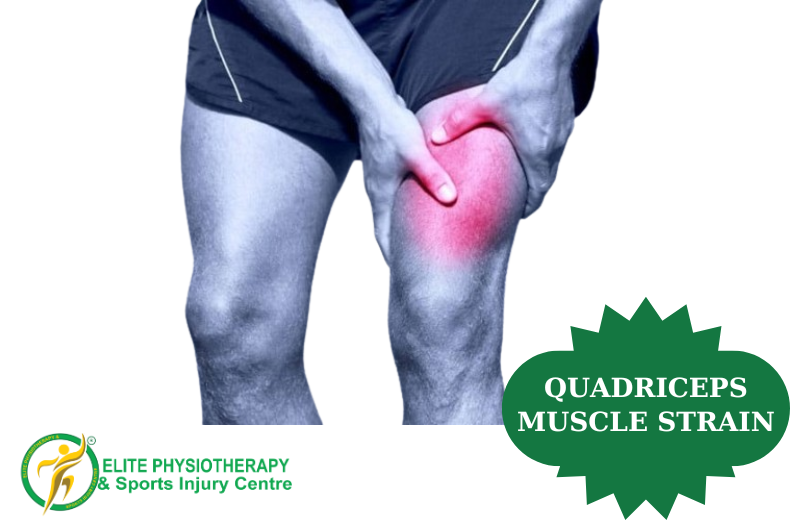
Quadriceps Muscle Strain
An injury to the big muscles at the front of the leg known as a quadriceps muscle strain is frequently brought on by abrupt, strong movements, overstretching, or direct impact. It causes discomfort, edema, and restricted motion, and is common among athletes. Recovery depends on receiving ice, rest, and physiotherapy as soon as possible.
The degree of quadriceps strains varies, from little soreness to significant tears. Bruising, muscular weakness, and trouble walking or bending the knee are possible symptoms. The following are risk factors: weariness, muscular imbalances, and insufficient warm-up. Imaging and a physical examination are frequently necessary for a proper diagnosis. Strengthening, flexibility, and a gradual return to exercise are the main goals of rehabilitation.
Questions
What is a quadriceps muscle strain?
Quadriceps muscle strain is condition of overstreched or torn one or more of the muscles in the quadriceps group. This injury can range from a mild stretch of the muscle fibers to a complete tear, often causing pain, swelling, and difficulty with movement.
What are the common causes of a quadriceps muscle strain?
Common cause of quadriceps strain are:
1. Sudden or forceful movement such as sprinting, jumping, or kicking in football.
2. Due to oversue, or in sports tha involve repetitive leg movements.
3. Inadequate warm-up before game.
4. Muscle fatigue.
5. Muscle imbalance, when quadriceps and hamstring strength are disproportionate.What are the symptoms of a quadriceps muscle strain?
The symptoms of a quadriceps strain vary depending on the severity of the injury. Common signs include:
1. Sharp pain in front of the thigh.
2. Swelling or bruising.
3. Difficulty in knee movement.
4. Weakness in affected leg.
5. Popping or snaping sensation at the time of injury.Classification of quadriceps muscle strain?
Quadriceps muscle strain can be classified as:
1. Grade I: Only limited number of fibers are affected. There is no evident weakness, ROM is also unaffected.
2. Grade II: Nearly half fo the muscle fibers are torn. There is pain and swelling and also minor decrease in strength.
3. Grade III: Complete rupture of muscle. Severe swelling and pain with complete loss of function.What are the treatment options for a quadriceps muscle strain?
Treatment for a quadriceps strain depends on the severity of the injury but generally follows the R.I.C.E. principle:
Rest: Avoid activities that exacerbate the pain.
Ice: Apply ice packs to reduce swelling and numb the pain.
Compression: Use an elastic bandage to minimize swelling.
Elevation: Elevate the leg to reduce swelling.Physiotherapy plays a crucial role in recovery, with exercises focused on stretching and strengthening the quadriceps muscles. In more severe cases, treatment may include ultrasound therapy, electrical stimulation, or even surgery if there's a complete tear.
How can physiotherapy help in the recovery process?
Physiotherapy is vital for a safe and effective recovery. A physiotherapist will design a personalized rehabilitation program that may include:
Stretching and flexibility exercises to restore range of motion.
Strengthening exercises to rebuild muscle strength and prevent future injury.
Manual therapy techniques, such as massage or mobilization, to reduce pain and improve tissue healing.
Education on proper techniques and preventive strategies to avoid re-injury.
At our Elite Physiotherapy and Sports Injury Centre, we offer specialized treatment plans tailored to your needs, helping you return to your normal activities as quickly and safely as possible.
